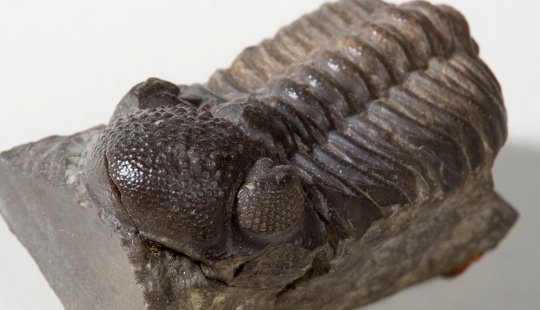
The biggest extinction ever known on Earth resulted from oceans turned acid by CO2, the main gas driving human-caused climate change today.
Scientists have identified the lethal agency that caused the single most catastrophic event in the history of life on Earth. The mass extinction at the boundary of the Permian and Triassic eras 252 million years ago was caused by the acidification of the world’s oceans, as a consequence of an increase in atmospheric carbon dioxide.
The Permian Extinction – sometimes called “the Great Dying” – seemed to all but obliterate life in the oceans, and perhaps on land. More than 90% of all species disappeared, more than 80% of all genera, and more than 50% of all marine families were extinguished in one prolonged calamity.
All life on Earth today has descended from the few survivors of this far-off episode. Palaeontologists, geologists, climate scientists and astronomers have all speculated on the probable cause. The latest and most confident analysis is based on a new study of ancient marine sediments and delivers obvious parallels with processes that are – for different reasons ? occurring again today.
Matthew Clarkson of the University of Edinburgh in Scotland (but now at the University of Otago in New Zealand) and colleagues report in the journal Science that they examined limestone from the United Arab Emirates and found, in the isotope ratios of the element boron, evidence of ocean acidity in carbonate rocks that were laid down as sediment at the bottom of the ocean 250 million years ago. A change in the isotope ratios, they calculated, would have indicated a significant shift in seawater chemistry.
“This is a worrying finding, considering that we can already see an increase in ocean acidity today that is the result of human carbon emissions”
Over the last 40 years, researchers have introduced a whole suite of plausible triggers for the Permian extinction, but at last one team had clear evidence of increased atmospheric carbon, probably from a prolonged and convulsive series of volcanic eruptions that gave rise to vast, ancient geological formations now known as the Siberian Traps.
“Scientists have long suspected that an ocean acidification event occurred during the greatest mass extinction of all time, but direct evidence has been lacking until now”, said Dr Clarkson. “This is a worrying finding, considering that we can already see an increase in ocean acidity today that is the result of human carbon emissions.”
There has been recent evidence that this present change in the pH of ocean waters (pH is a measure of its acidity) as a consequence of fossil fuel combustion in the last two centuries has already disturbed the behaviour of some fish species, threatened to affect oyster fisheries and coral reefs, and even to alter whole ocean ecosystems.
The changes in the Permian were not sudden: ecosystems already seriously under stress because of lack of oxygen or rising temperatures were then dramatically affected by discharges of carbon dioxide that were probably much greater than all the modern world’s existing fossil fuel reserves could deliver. As the oceans became more acidic, many species were extinguished forever: among them the trilobites.
The whole chain of events took 60,000 years. Humans have been burning fossil fuels for only 200 years, but, the researchers point out, in the Permian crisis, carbon was probably being released into the atmosphere at the rate of about 2.4 billion tons a year. Right now, humans are estimated to be releasing carbon from fossil fuels at the rate of 10 billion tons a year. ? Climate News Network
About the Author
 Tim Radford is a freelance journalist. He worked for The Guardian for 32 years, becoming (among other things) letters editor, arts editor, literary editor and science editor. He won the Association of British Science Writers award for science writer of the year four times. He served on the UK committee for the International Decade for Natural Disaster Reduction. He has lectured about science and the media in dozens of British and foreign cities.
Tim Radford is a freelance journalist. He worked for The Guardian for 32 years, becoming (among other things) letters editor, arts editor, literary editor and science editor. He won the Association of British Science Writers award for science writer of the year four times. He served on the UK committee for the International Decade for Natural Disaster Reduction. He has lectured about science and the media in dozens of British and foreign cities.
 Book by this Author:
Book by this Author:
Science that Changed the World: The untold story of the other 1960s revolution
by Tim Radford.
Click here for more info and/or to order this book on Amazon. (Kindle book)



























